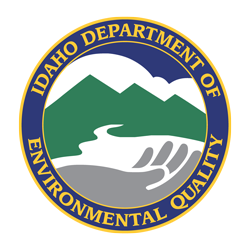Vehicles emit many different pollutants, including fine particulate matter, carbon monoxide, nitrogen oxides, sulfur oxides, and volatile organic compounds, making them one of the largest contributors to air pollution nationwide. These pollutants can combine in the air to form PM2.5 and ozone, which are the main pollutants of concern in Idaho. PM2.5 and ozone can lead to health conditions such as asthma and respiratory illnesses and can also impact visibility, affect water resources, and damage buildings.
The Treasure Valley’s Inspection and Maintenance (I/M) programs were implemented to help reduce air pollutants. However, modeling results show I/M programs are not as effective as they once were due to vehicle turnover and new, stricter federal motor vehicle emissions standards. Additionally, air quality in the Treasure Valley has improved over the past three decades and the area is currently meeting all national health-based standards.
In 2022, the Idaho Legislature passed a law to repeal the state requirement for vehicle I/M programs (e.g., emissions testing), effective July 1, 2023. In 2023, the U.S. Environmental Protection Agency approved the removal in Ada County.
Even with cleaner vehicles, air pollution will remain a concern in Idaho and the Treasure Valley. There will still be periods of deteriorated air quality, and vehicles will remain a contributing factor. Without the I/M programs, the motoring public can still take steps to reduce emissions by considering the suggestions listed below.
How You Can Help Reduce Vehicle Emissions
Consider the many ways you can reduce the pollutants emitted from your car.
Maintain your vehicle.
- Repair your vehicle when the check engine light is on. The check engine light indicates that your vehicle has a problem that could decrease its efficiency and increase the pollution it emits.
- Get regular tune-ups. Vehicles with worn spark plugs, clogged fuel, or air filters do not run efficiently and emit more pollution.
- Keep tires properly inflated and wheels aligned to reduce tire drag on the road. Gas mileage drops 1% for every pound below the recommended pressure level.
- Do not top off the gas tank. This allows harmful chemicals to be released into the air.
Drive less.
- Ride the bus, carpool, walk, or bike to reduce the number of cars on the road.
- Organize a carpool at work. Call 208-345-POOL for help.
- Combine trips to the same areas. Once you arrive, park your car and walk between destinations.
Drive wisely.
- Avoid carrying extra items. Each additional 100 pounds increases the amount of gas used by 4%.
- Place items inside the vehicle instead of on the roof racks and remove roof racks when not in use. The drag from a rack increases gas consumption by almost one mile per gallon.
- Drive at a steady speed and avoid stop-and-go traffic.
- Use the air conditioner only when necessary. Air conditioners can reduce your gas mileage by 20%.
- Avoid idling. Restarting a warm engine takes less fuel than running for 30 seconds.
- During hot summer, fuel vehicles in the evening to reduce the release of volatile organic compounds that contribute to ozone formation.

